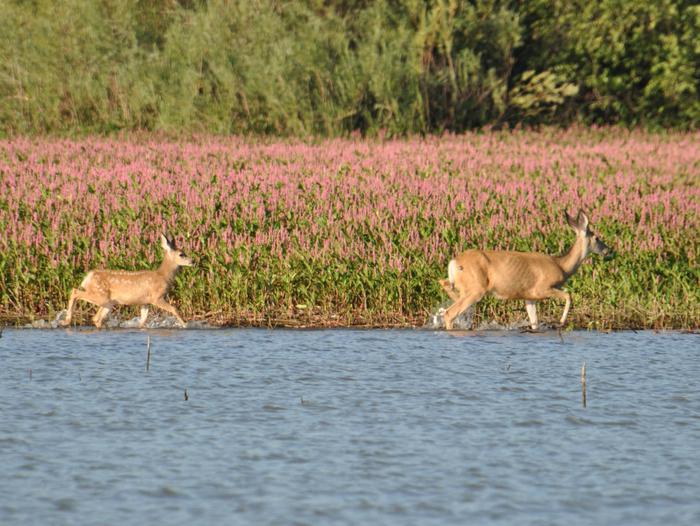Deer Flat National Wildlife Refuge
Fish and Wildlife Service, Idaho.
Deer Flat National Wildlife Refuge is one of the oldest refuges in the National Wildlife Refuge System. It was established in 1909 to designate the new irrigation reservoir as a refuge and breeding grounds for migratory birds and other wildlife. The refuge now serves as an urban oasis for both wildlife and Treasure Valley residents and visitors.
Deer Flat National Wildlife Refuge has two units–-Lake Lowell and the Snake River Islands. The Lake Lowell Unit encompasses over 10,500 acres, including the almost 9,000-acre Lake Lowell and surrounding lands. The Snake River Islands Unit contains over 1000 acres on 104 islands. Refuge islands are distributed along 113 river miles from the Canyon-Ada County Line in Idaho, to Farewell Bend in Oregon.
The Refuge protects a wide range of wildlife habitats: the open waters and wetland edges of Lake Lowell, the sagebrush uplands around the lake and the grasslands and riparian forests on the Snake River islands. The variety of habitats makes the refuge an important breeding area for resident and migratory birds, including providing one of the few nesting areas for western and Clark’s grebes in Idaho. The refuge is also a significant resting and wintering area for birds migrating along the Pacific Flyway, including spectacular concentrations of mallards and Canada geese. Because of its value to birds, Deer Flat National Wildlife Refuge has been declared an Important Bird Area by the National Audubon Society.
The refuge welcomes diverse communities to connect with nature and each other through free educational and outdoor recreational experiences.
Nearby Activities
- Auto Touring
- Biking
- Birding
- Boating
- Cross Country Skiing
- Educational Programs
- Fishing
- Hiking
- Historic & Cultural Site
- Horseback Riding
- Hunting
- Ice Fishing
- Interpretive Programs
- Motor Boat
- Non-Motorized Boating
- Photography
- Picnicking
- Snowshoeing
- Swimming
- Visitor Center
- Wildlife Viewing
Directions
Driving directions to the refuge visitor center
- Take Exit 33 off of Interstate 84.
- After exiting the freeway, turn right (west) onto Highway 55/Karcher Road.
- Follow Karcher Road about 3.5 miles to Lake Avenue.
- Turn left onto Lake Avenue and drive about 2.5 miles to the intersection with Roosevelt Avenue.
- Turn right onto Roosevelt Avenue.
- At Indiana Avenue at the top of the hill, turn left into the refuge and follow the road to the visitor center

